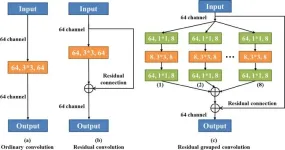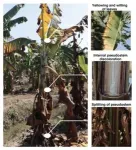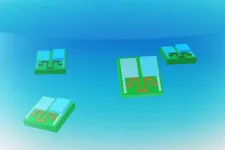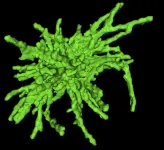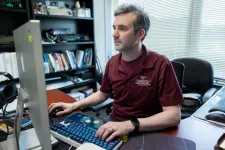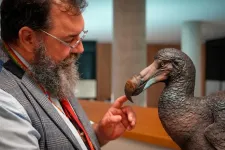(Press-News.org)
The brain is responsible for the "general command" of human thinking and coordination of the body. Thus, various brain diseases can cause great damage to the human body and nervous system. Brain tumors are caused by abnormal cells that grow and multiply irregularly within the brain. Glioma is one of the most common malignant tumors in adults. It originates from glial cells and the surrounding infiltrating tissue, compresses other normal tissues in the brain during the growth process, and blurs the boundary of the tumor. Hence, it is likely to cause damage to normal brain tissue during treatment, causing irreversible harm to human health. Therefore, the precise determination of segmentation boundaries of brain tumors has become an urgent problem to be solved.
With the rapid advancement of medical imaging diagnostic technology, various medical imaging techniques have played important roles in the clinical detection of the disease and formulation of patient treatment plans. Among them, magnetic resonance imaging (MRI) plays an important role in the diagnosis of brain tumors as a noninvasive and safe modality, providing clear and strong contrast. However, the invasive and highly heterogeneous nature of the tumor, leads to a high degree of nonuniformity and borderless features in MRI images. In addition, the influence of external factors and different MRI acquisition methods may change the appearance of tumors or even produce artifacts, reducing image quality. This makes the detection and treatment of brain tumors challenging.
In clinical practice, the labeling of brain tumor target areas is primarily performed by radiologists. Depending on the personal experience of the tagger, this process is not only time-consuming and laborious, but also difficult, as there is no consistent standard for segmentation. Therefore, an accurate and rapid automatic segmentation method would be of great significance to the MR community in academic research and the clinical setting, for the diagnosis, monitoring, and progress evaluation of conditions related to the nervous system, such as brain diseases.
Although deep learning methods such as the convolutional neural network (CNN), can be used for brain tumor image segmentation, the segmentation results based only on the traditional CNN method exhibit rough boundaries and poor performance in tumor details. To solve these problems, this study adopts a residual grouped convolution module (RGCM) based on U-net, to reduce model parameters and computational load and accelerate model convergence. Feature extraction ability and segmentation accuracy of the model are improved, using a convolutional block attention module (CBAM) and a bilinear interpolation method to effectively solve the problems of missing details and unsmooth boundaries in the output segmentation results. Part of this work was presented at the 2022 5th International Conference on Computer Science and Software Engineering under the heading of "RGA-Unet: An improved U-net segmentation model based on residual grouped convolution and convolutional block attention module for brain tumor MRI image segmentation"
The difference between this study and previous work is that, this study investigates the influence of normalization processing, loss function, and network depth on segmentation performance, and further improves the segmentation accuracy of the model. The specific research can be summarized as follows:
(1)
RGCM is used to perform the high-dimensional convolution in the original network layer as eight identical low-dimensional convolutions, thereby reducing the number of parameters, computation load, and convergence time of the model, to obtain higher segmentation accuracy.
(2)
CBAM is used to imitate human visual processing such that the model pays more attention to the feature extraction of the tumor region, increasing the weight of feature learning in that region, to further improve segmentation accuracy.
(3)
The influences of the sampling method, normalization, loss function, network depth, and other factors on segmentation performance were studied, whereby bilinear interpolation upsampling, instance normalization, binary cross entropy (BCE)-Dice loss function, and a four-layer encoder-decoder structure were adopted to improve the proposed model. The proposed model achieved the best segmentation effect.
END
Society relies heavily on diverse fluidic technologies. The ability toprecisely capture and release various chemical and biological fluids plays a fundamental role in many fields.A long-standing challenge is to design a platform that enables the switchable capture and release of liquids with precise spatial and temporal control and accurate volumes of the fluid. Recently, researchers at The Polytechnic University of Hong Kong (PolyU) have invented a new method to effectively overcome this challenge.
Led by Prof. WANG Liqiu, Otto Poon Charitable Foundation Professor in Smart and Sustainable Energy, Chair ...
A tiny battery designed by MIT engineers could enable the deployment of cell-sized, autonomous robots for drug delivery within in the human body, as well as other applications such as locating leaks in gas pipelines.
The new battery, which is 0.1 millimeters long and 0.002 millimeters thick — roughly the thickness of a human hair — can capture oxygen from air and use it to oxidize zinc, creating a current of up to 1 volt. That is enough to power a small circuit, sensor, or actuator, the researchers showed.
“We think this is going to be very enabling ...
Studying cell migration is vital because it plays a crucial role in many biological processes, including immune response, wound healing, and cancer metastasis. Understanding how cells move and behave can lead to breakthroughs in treating diseases, developing new drugs, and creating innovative therapies. For example, in cancer research, tracking how cancer cells migrate can reveal how tumors grow and spread through the human body. This insight can led to the discovery of more efficient and targeted treatments to stop or even prevent metastasis.
Scientists have introduced CellTracksColab, a tool that simplifies cell tracking data analysis. This free platform leverages advanced ...
Researchers at Utrecht University in the Netherlands have identified a new way in which the toxic protein aggregates associated with Huntington’s disease may damage nerve cells and cause them to die. The study, to be published August 16 in the Journal of Cell Biology (JCB), suggests that the aggregates can poke holes in the membrane that separates the nucleus from the rest of the cell, damaging the DNA inside the nucleus and changing the activity of neuronal genes.
Huntington’s disease is a devastating neurogenerative disorder caused by a mutation in the HTT gene that results in cells producing abnormally large versions of the huntingtin protein. These ...
The Colorado River and its tributaries provide water for hydropower, irrigation and drinking water in seven U.S. states and Mexico. Much of this water comes from the snowpack that builds up over the winter and then melts each spring. Every year in early April, water managers use the snowpack to predict how much water will be available for the upcoming year.
But since 2000, these predictions have been incorrect, with the actual streamflow being consistently lower than the predicted streamflow. That’s left water managers ...
On May 11, a gorgeous aurora surprised stargazers across the southern United States. That same weekend, a tractor guided by GPS missed its mark.
What do the visibility of the northern lights have in common with compromised farming equipment in the Midwest?
A uniquely powerful geomagnetic storm, according to two newly published papers co-authored by Virginia Tech's Scott England.
“The northern lights are caused by energetic, charged particles hitting our upper atmosphere, which are impacted by numerous factors in space, including the sun,” said England, associate professor in the Kevin T. Crofton Department of Aerospace and Ocean Engineering. “During ...
COLUMBUS, Ohio – A new national study provides the best evidence to date that generous unemployment insurance benefits during the COVID-19 pandemic helped reduce reliance on high-cost credit use.
Researchers found that lower-income residents of states with more generous benefits were significantly less likely than those living in less-generous states to take out new credit cards, personal finance loans and payday loans or other alternative financial service offerings.
The study, published recently in the journal ...
With new medications on the market or in the works for Alzheimer’s disease and other kinds of dementia, a new study suggests that getting the diagnosis needed to access these new treatments may depend on where you live.
The percentage of people who get a new dementia diagnosis each year varies a lot across regions of the U.S., the study finds.
And the differences between regions of the country are even larger for people on the young end of the dementia-risk age range, ages 66 to 74, and for those who are Black ...
August 16, 2024
The Banana Apocalypse is Near, but UMass Amherst Biologists Might Have Found a Key to Their Survival
Discovery of molecular mechanisms used by the banana-destroying microbe brings hope to the breakfast table
AMHERST, Mass. – The bananas in your supermarket and that you eat for breakfast are facing functional extinction due to the disease Fusarium wilt of banana (FWB) caused by a fungal pathogen called Fusarium oxysporum f.sp. cubense (Foc) tropical race 4 (TR4). However, thanks to recent research from an ...
Rethinking the Dodo
Review of 400 years of scientific literature corrects the record on icon of extinction
Researchers are setting out to challenge our misconceptions about the Dodo, one of the most well-known but poorly understood species of bird.
In a paper published today [16 August 2024] in the Zoological Journal of the Linnean Society researchers from the University of Southampton, Natural History Museum (NHM) and Oxford University Museum of Natural History have undertaken the most comprehensive review of the taxonomy of the Dodo and its closest relative, the Rodriguez ...
